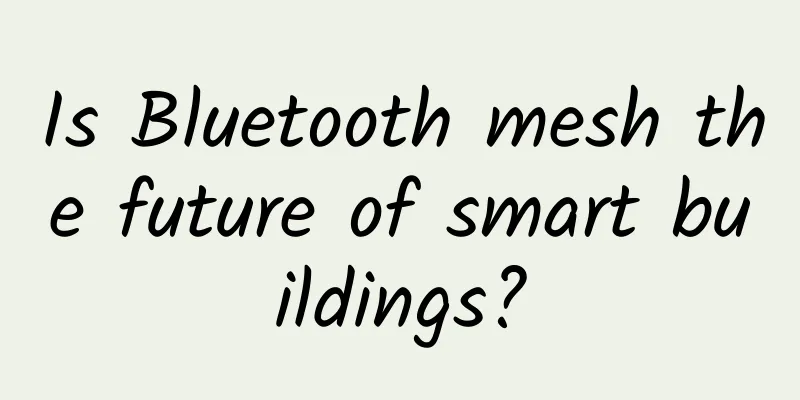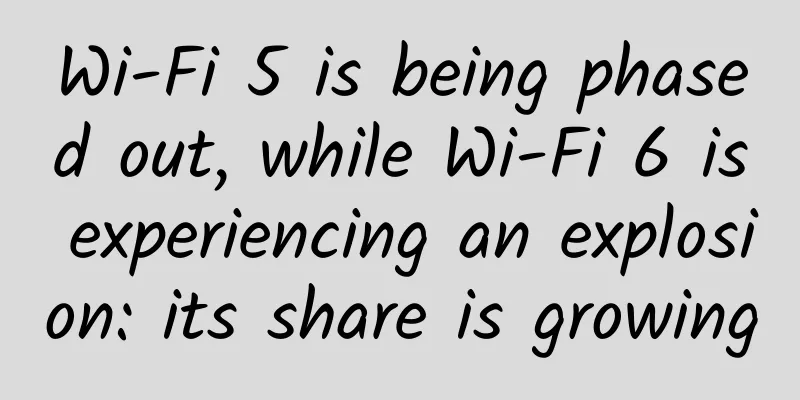Is Bluetooth mesh the future of smart buildings?

|
Smart buildings, whether residential, commercial or mixed-use, are a top priority for developers. Connected technology can make buildings more energy efficient, more compliant with environmental regulations, safer and more attractive to tenants and buyers. However, wired systems are expensive and complex to commission and install. Therefore, wireless connectivity is the key implementation, and Bluetooth mesh in particular has become a potential driver for future smart buildings.
What is Bluetooth mesh? All mesh networks follow a similar structure, where each node in the network connects to as many other nodes as possible. Mesh networks can dynamically self-organize and self-configure, which makes them very efficient at relaying data. In traditional networks, each node must connect to a hotspot or access point, while mesh network nodes communicate with each other, so the signal is amplified and its range is extended. Bluetooth mesh is a simple, architecture-based network for Bluetooth LE devices. It was conceived in 2015 and adopted in 2017. What are the benefits of Bluetooth mesh? Bluetooth mesh networking supports many-to-many device communication, which means it has a wide range of application potential where a large number of sensors or devices need to be centrally managed, such as those in smart buildings. It is highly scalable, reliable and secure - making it useful in commercial environments as well as residential and consumer-centric environments, so it can be used in industrial buildings such as factories, airports, hospitals and department stores, as well as homes. (Source iothome.com) In other words, it can bring great value to smart buildings in a cost-effective and easy-to-manage way. Smart lighting use cases In smart buildings, one of the most talked-about applications for Bluetooth mesh is building lighting management, an application that has been promoted around the world. Low-power LED lighting has been recognized as a powerful technology to reduce the overall energy consumption of buildings. By combining Bluetooth mesh technology with LEDs, manufacturers can create interconnected lighting systems that allow sensors and software to communicate with each other throughout the building. The result is lighting systems that can be centrally monitored and automated, such as delivering information (lighting can be used to guide visitors to specific locations or help them find an exit in an emergency) or simply better manage power consumption (lighting that automatically turns on or off based on the time of day or amount of activity). According to ABI Research, shipments of smart lighting devices will increase fivefold by 2022, largely due to Bluetooth mesh technology. But lighting is just the beginning. Because of Bluetooth mesh’s cost-effective scalability and universal principles, it can form the basis for a wide range of building automation and optimization use cases, such as environmental control, asset tracking, and security systems. The possibilities for future smart buildings are endless, and Bluetooth mesh is just the beginning. |
<<: How to deal with the impact of digital transformation on the network
>>: 10 pain points: How IT departments face edge computing
Recommend
Best Practices for Stream Computing Processing with Flink on Zeppelin
Content framework: Big Data Overview Flink Learni...
How Wi-Fi Location Services Enable IoT Asset Tracking
To locate IoT devices, you need a wireless commun...
RAKsmart: New AS9929 line in Los Angeles, dedicated server/cloud server/VPS options starting from $1.95/month
RAKsmart recently added China Unicom AS9929 line ...
China Unicom successfully led a new project on shared network requirements and architecture based on blockchain in ITU-T
[[388061]] At the ITU-T SG13 plenary meeting held...
EBS Lens, a powerful tool for block storage monitoring and service stress testing and tuning, is released
EBS Monitoring Status Block storage is a block de...
Huawei Vice Chairman Hu Houkun: Crossing the business chasm and creating new 5G value
During the 2020 Global Mobile Broadband Forum, Hu...
How Industrial Private 5G Can Help Enable Sustainable and Agile Industrial Operations
For the past few decades, wireless communication ...
Distributed current limiting, everything you want to know is here
Preface In a high-concurrency system, it is very ...
The overlooked hardware vulnerabilities in enterprise networks
Typically, hackers will gravitate to the weakest ...
IDC survey: Only 9% of enterprises plan to use 5G for IoT deployment
5G promises to be ten times faster than existing ...
Artificial intelligence accelerates industrial innovation and upgrading. How should network infrastructure respond?
In today's digital economy era, digital trans...
It is a duty for China Unicom to win against China Mobile, but it is a skill to win against China Telecom
In 2018, policies such as mixed-ownership reform ...
[Closed] NextArray: $1.99/month KVM-1GB/10GB/1TB/Portland Data Center
[Closed] NextArray has added three new US nodes th...
Baidu cloud carnival/price guarantee 11.11, cloud server as low as 46 yuan/year
This year's Double 11 event started very earl...
"Connecting Everything with Light, Sense the Extraordinary" Huawei held a seminar for core partners of industry perception distribution
On May 10, Huawei's Industry Perception Distr...









